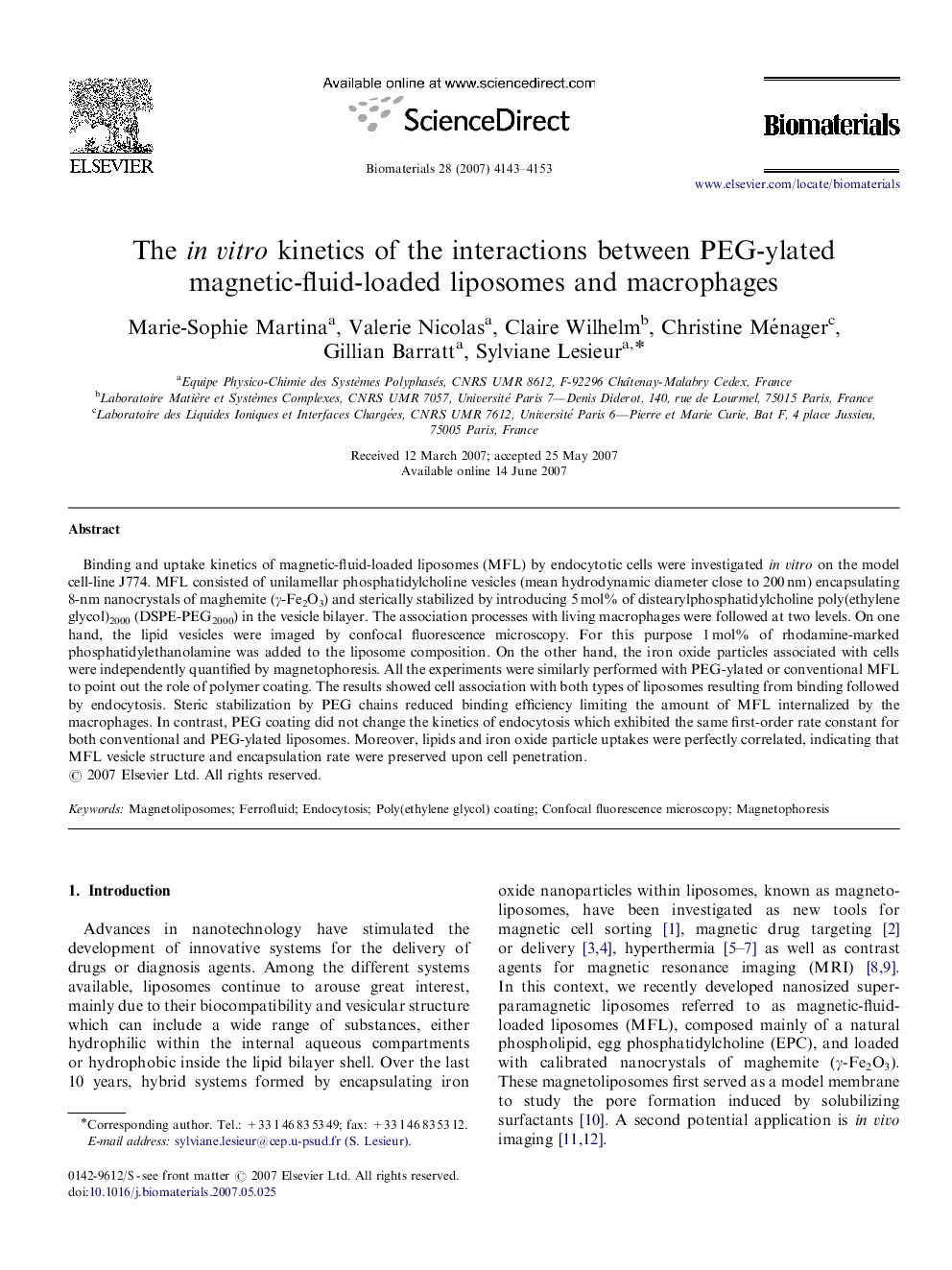| Article ID | Journal | Published Year | Pages | File Type |
|---|---|---|---|---|
| 11033 | Biomaterials | 2007 | 11 Pages |
Binding and uptake kinetics of magnetic-fluid-loaded liposomes (MFL) by endocytotic cells were investigated in vitro on the model cell-line J774. MFL consisted of unilamellar phosphatidylcholine vesicles (mean hydrodynamic diameter close to 200 nm) encapsulating 8-nm nanocrystals of maghemite (γ-Fe2O3) and sterically stabilized by introducing 5 mol% of distearylphosphatidylcholine poly(ethylene glycol)2000 (DSPE-PEG2000) in the vesicle bilayer. The association processes with living macrophages were followed at two levels. On one hand, the lipid vesicles were imaged by confocal fluorescence microscopy. For this purpose 1 mol% of rhodamine-marked phosphatidylethanolamine was added to the liposome composition. On the other hand, the iron oxide particles associated with cells were independently quantified by magnetophoresis. All the experiments were similarly performed with PEG-ylated or conventional MFL to point out the role of polymer coating. The results showed cell association with both types of liposomes resulting from binding followed by endocytosis. Steric stabilization by PEG chains reduced binding efficiency limiting the amount of MFL internalized by the macrophages. In contrast, PEG coating did not change the kinetics of endocytosis which exhibited the same first-order rate constant for both conventional and PEG-ylated liposomes. Moreover, lipids and iron oxide particle uptakes were perfectly correlated, indicating that MFL vesicle structure and encapsulation rate were preserved upon cell penetration.
